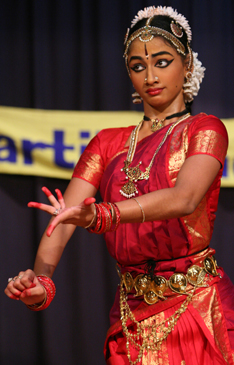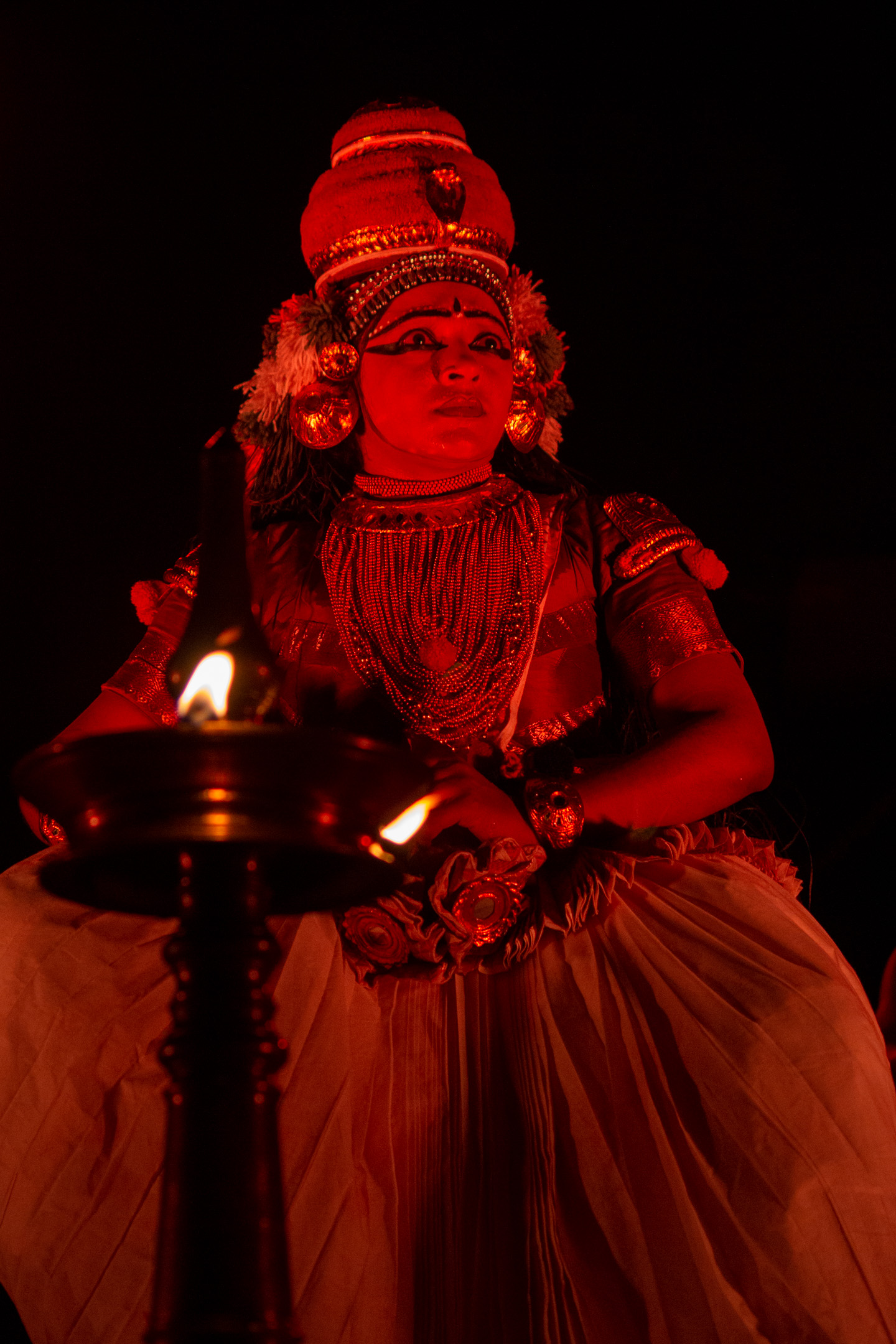|
Shringara
Sringara ( sa, शृङ्गार, ) is one of the nine rasas, usually translated as erotic love, romantic love, or as attraction or beauty. ''Rasa'' means "flavour", and the theory of rasa is the primary concept behind classical Indian arts including theatre, music, dance, poetry, and sculpture. Much of the content of traditional Indian arts revolves around the relationship between a man and a woman. The primary emotion thus generated is Sringara. The romantic relationship between lover and beloved is a metaphor for the relationship between the individual and the divine. Classical theater/dancers (i.e. Bharatanatyam, Odissi, Mohiniyattam) refer to Sringara as 'the Mother of all rasas.' Sringara gives scope for a myriad of other emotions including jealousy, fear, anger, compassion, and of course for the expression of physical intimacy. No other Rasa has such a vast scope. The treatment and performance of Sringara varies on a large scale from the grotesque (as in Koodiyattam) to ... [...More Info...] [...Related Items...] OR: [Wikipedia] [Google] [Baidu] |
Odissi Dance
Odissi (), also referred to as Orissi in old literature, is a major ancient Indian classical dance that originated in the temples of Odisha – an eastern coastal state of India.Odissi ''Encyclopædia Britannica'' (2013) Odissi, in its history, was performed predominantly by women, and expressed stories and spirital ideas, particularly of through songs written and composed according to the ''ragas'' & ''talas'' of |
Rasa (aesthetics)
In Indian aesthetics, a rasa ( sa, रस) literally means "nectar, essence or taste".Monier Monier-Williams (1899)Rasa Sanskrit English Dictionary with Etymology, Motilal Banarsidass (Originally Published: Oxford) It connotes a concept in Indian arts about the aesthetic flavour of any visual, literary or musical work that evokes an emotion or feeling in the reader or audience but cannot be described.Rasa: Indian Aesthetic Theory Encyclopedia Britannica (2013) It refers to the emotional flavors/essence crafted into the work by the writer and relished by a 'sensitive spectator' or ''sahṛdaya,'' literally one who "has heart", and can connect to the work with emotion, without dryness. Rasas are created by ''bhavas'': the state of mind. The ''rasa'' theory has a dedicated section (Chapter 6) in the |
Indian Arts
Indian art consists of a variety of art forms, including painting, sculpture, pottery, and textile arts such as woven silk. Geographically, it spans the entire Indian subcontinent, including what is now India, Pakistan, Bangladesh, Sri Lanka, Nepal, and at times eastern Afghanistan. A strong sense of design is characteristic of Indian art and can be observed in its modern and traditional forms. The origin of Indian art can be traced to prehistoric settlements in the 3rd millennium BCE. On its way to modern times, Indian art has had cultural influences, as well as religious influences such as Hinduism, Buddhism, Jainism, Sikhism and Islam. In spite of this complex mixture of religious traditions, generally, the prevailing artistic style at any time and place has been shared by the major religious groups. In historic art, sculpture in stone and metal, mainly religious, has survived the Indian climate better than other media and provides most of the best remains. Many of the most i ... [...More Info...] [...Related Items...] OR: [Wikipedia] [Google] [Baidu] |
Divinity
Divinity or the divine are things that are either related to, devoted to, or proceeding from a deity.divine – Dictionary.com. What is or is not divine may be loosely defined, as it is used by different s. Etymology The root of the word ''divine'' is literally "godly", but the use varies significantly depending on which deity is being discussed.Usages Divinity as a quality has two distinct usages: *Divine force or power - Powers or forces that are universal, or transcend human capacities *Divinity applied to mortals - Qualities of individuals who are considered to have some special access or relationship to the divine. Overlap occurs between these usages ...[...More Info...] [...Related Items...] OR: [Wikipedia] [Google] [Baidu] |
Bharatanatyam
Bharatanatyam () is a major form of Indian classical dance that originated in Tamil Nadu. It is one of the eight widely recognized Indian classical dance forms, and expresses South Indian religious themes and spiritual ideas, particularly of Shaivism and in general of Hinduism.Bharata-natyam ''Encyclopædia Britannica''. 2007 A description of Bharatanatyam from the 2nd century CE can be found in the ancient Tamil epic ''Silappatikaram'', while temple sculptures of the 6th to 9th century CE suggest it was a highly refined performance art by the mid-1st millennium CE. Bharatanatyam is the oldest classical dance tradition in India. Bharatanatyam is the state dance form of Tamil Nadu. Bharatanatyam contains different types of ''baanis''. ''Ba ... [...More Info...] [...Related Items...] OR: [Wikipedia] [Google] [Baidu] |
Mohiniyattam
Mohiniyattam, ( ml, മോഹിനിയാട്ടം), is an Indian classical dance form that developed and remained popular in the state of Kerala. Kathakali is another classical dance form of Kerala. Mohiniyattam dance gets its name from the word Mohini – a historical enchantress avatar of the Hindu God Vishnu, who helps the good prevail over evil by developing her feminine powers. Mohiniyattam's roots, like all classical Indian dances, are in the ''Natya Shastra'' – the ancient Hindu Sanskrit text on performance arts. However, it follows the Lasya style described in ''Natya Shastra'', that is a dance which is delicate, eros-filled and feminine. It is traditionally a solo dance performed by women after extensive training, though nowadays men can also perform the dance. The repertoire of Mohiniyattam includes music in the Carnatic style, singing and acting a play through the dance, where the recitation may be either by a separate vocalist or the dancer themselves. T ... [...More Info...] [...Related Items...] OR: [Wikipedia] [Google] [Baidu] |
Koodiyattam
Koodiyattam ( ml, കൂടിയാട്ടം; IAST: kūṭiyāṭṭaṁ; ) is a traditional performing art form in the state of Kerala, India. It is a combination of ancient Sanskrit theatre with elements of ''Koothu'', an ancient performing art from the Sangam era. It is officially recognised by UNESCO as a Masterpiece of the Oral and Intangible Heritage of Humanity. Origin Koodiyattam, meaning "combined acting" in Malayalam, combines Sanskrit theatre performance with elements of traditional koothu. It is traditionally performed in temple theatres known as ''koothambalams''. It is the only surviving art form that uses drama from ancient Sanskrit theatre. It has a documented history of a thousand years in Kerala, but its origins are not known. Koodiyattam and Chakyar koothu were among the dramatized dance worship services in the temples of ancient India, particularly Kerala. Both koodiyattam and Chakyar koothu originated from the ancient art form koothu, which is mention ... [...More Info...] [...Related Items...] OR: [Wikipedia] [Google] [Baidu] |
Natya Shastra
The ''Nāṭya Śāstra'' (, ''Nāṭyaśāstra'') is a Sanskrit treatise on the performing arts. The text is attributed to sage Bharata Muni, and its first complete compilation is dated to between 200 BCE and 200 CE, but estimates vary between 500 BCE and 500 CE. The text consists of 36 chapters with a cumulative total of 6000 poetic verses describing performance arts. The subjects covered by the treatise include dramatic composition, structure of a play and the construction of a stage to host it, genres of acting, body movements, make up and costumes, role and goals of an art director, the musical scales, musical instruments and the integration of music with art performance. The ''Nāṭya Śāstra'' is notable as an ancient encyclopedic treatise on the arts, one which has influenced dance, music and literary traditions in India. It is also notable for its aesthetic Rasa (aesthetics), "Rasa" theory, which asserts that entertainment is a desired effect of performa ... [...More Info...] [...Related Items...] OR: [Wikipedia] [Google] [Baidu] |
Kutiyattam
Koodiyattam ( ml, കൂടിയാട്ടം; IAST: kūṭiyāṭṭaṁ; ) is a traditional performing art form in the state of Kerala, India. It is a combination of ancient Sanskrit theatre with elements of ''Koothu'', an ancient performing art from the Sangam era. It is officially recognised by UNESCO as a Masterpiece of the Oral and Intangible Heritage of Humanity. Origin Koodiyattam, meaning "combined acting" in Malayalam, combines Sanskrit theatre performance with elements of traditional koothu. It is traditionally performed in temple theatres known as ''koothambalams''. It is the only surviving art form that uses drama from ancient Sanskrit theatre. It has a documented history of a thousand years in Kerala, but its origins are not known. Koodiyattam and Chakyar koothu were among the dramatized dance worship services in the temples of ancient India, particularly Kerala. Both koodiyattam and Chakyar koothu originated from the ancient art form koothu, which is mention ... [...More Info...] [...Related Items...] OR: [Wikipedia] [Google] [Baidu] |
Māni Mādhava Chākyār
Guru Mani Madhava Chakyar (IAST: ''Māṇi Mādhava Cākyār'') (15 February 1899 – 14 January 1990) was a celebrated master performance artist and Sanskrit scholar from Kerala, India, considered to be the greatest Chakyar Koothu and Koodiyattam (ancient Sanskrit drama theatre tradition) artist and authority of modern times. He was considered as the authority of ''Abhinaya'' (the classical Indian acting style) and ''Nātyaśāstra''. Known as "the Emperor of Rasa-Abhinaya", he had an exceptional ability to perform ''Rasa-Abhinaya''. His ''Netrābhinaya'' was world-famous and he had the ability to act only with eyes. He was well versed in all the traditional Koodiyattams and all the ''prabandhas'' used in Chakyar Koothu. He was able to explain the concepts, methods and practices of Koodiyattam and Chakyar Koothu in a clear and authentic way. He had an in depth study of ''Nātyaśāstra'' of Bharata Muni, as well as ways of acting which were popular in Kerala. His knowledge ... [...More Info...] [...Related Items...] OR: [Wikipedia] [Google] [Baidu] |




.jpg)


